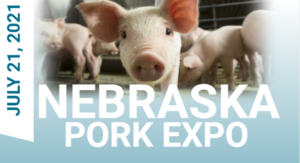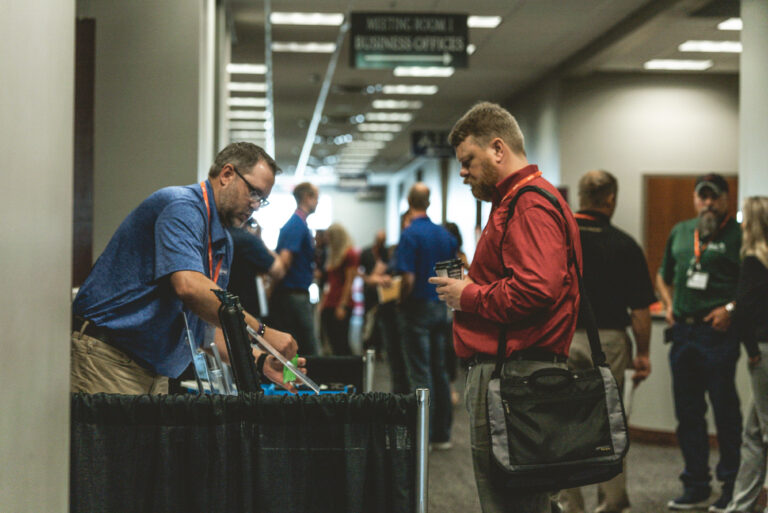OMAHA, NE – Nearly 300 attendees packed a ballroom in Omaha to learn about some of the new technologies available for cow-calf producers. Over the course of two days, participants learned about calving under roof and heard from speakers discussing everything from design, economics, feeding and veterinary care to dry lot options. At the end of both days a panel of  producers discussed the reasons they decided to put up a building and how they manage their cows under this type of setting. Drone footage and pictures of their barns gave attendees a better look at the layout of different barns and the panel was able to answer questions from the audience.
producers discussed the reasons they decided to put up a building and how they manage their cows under this type of setting. Drone footage and pictures of their barns gave attendees a better look at the layout of different barns and the panel was able to answer questions from the audience.
This is the second year an event like this has been held here in Nebraska, but this year AFAN, the Alliance for the Future of Agriculture in Nebraska, partnered with the Coalition to Support Iowa’s Farmers (CSIF) as well as the Nebraska Cattlemen and Iowa Cattlemen to make this event a multi-state event. “Both AFAN and CSIF work hard to provide our farmers and ranchers with learning opportunities,” stated Emily Skillett, Livestock Development Coordinator for AFAN, “These types of barns are a newer technology and with the decreasing availability of pasture land in eastern Nebraska and western Iowa, we wanted to make sure our farmers knew that there were some options out there for ways to expand their cow herd.”
With new management styles, comes new considerations to take when it comes to herd health. Cow-calf producers, Chad and Amy Wilkerson of Linden, Iowa, stated that prevention is key when using the calving under-roof approach. The Wilkerson’s answered questions at the symposium as two of the eleven producer panelists. They currently raise 160 cow-calf pairs in a hoop barn they filled for the first time in January of 2016. “In this setting you need a good nutritionist and a good vet,” Chad said. “You’ve got to have those two people in your back pocket that you know are going to be there and understand what you’re up against.”
Dr. Sara Barber, Veterinary Medical Center, explains that controlling the under-roof environment starts with proper bedding management. Dr. Barber says pens should always be kept dry and that bedding can easily be evaluated with what she calls the “dry knee test”. “Fall on your knees and if your knees get wet when you get up, you know you need more bedding.”
According to Kelly Jones, co-manager of Cactus Feeders’ cow-calf division, feed is a major cost in this production system and requires rations that can be modified to coincide with the reproductive stage of the herd. Jones suggests that too much bunk space is far better than too little, and that creep feeding areas featuring lowered bunks should be installed before calving begins. Other barn modifications may include incorporating maternity areas, working facilities and raising dirt levels around water tanks for calves. This kind of intensive management style may not fit every operation, so asking questions and reviewing research is always highly recommended.

